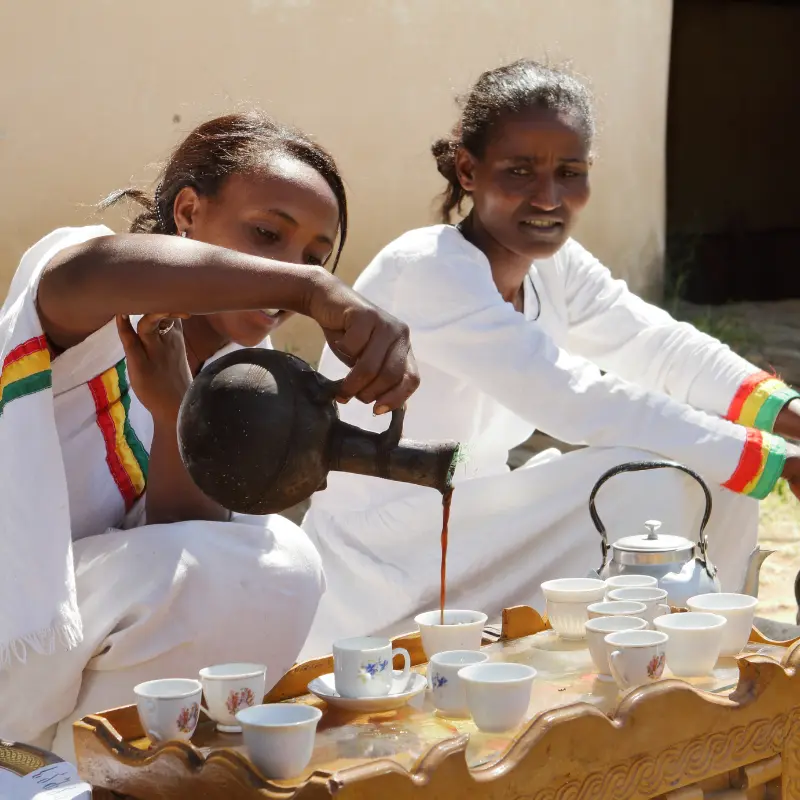Facts: Coffee Production in Africa- Ethiopia is the largest producer and exporter of coffee in Africa (accounting for 39% of the arabica beans produced) and the world’s fifth largest, accounting for 3% of the global market share today. However, Ethiopia is known to only produce arabica coffee beans. So, this directly puts another African country as a giant of robusta production. - Uganda is the largest producer of Robusta coffee in Africa, accounting for 70% of its production. This is surprisingly followed by a West African country, Ivory Coast, which accounts for 22% of the total production in Africa. The remaining market share is taken up by other smaller producers.
Africa’s Largest Coffee Producers1. $12. $13. $14. $15. $1
When it comes to coffee production, we tend to focus mostly on East African countries, such as Ethiopia, Kenya, Uganda, Tanzania, and Rwanda. This is usually due to their geographical locations. Areas, such as Ethiopia, Mount Kenya, and Mount Kilimanjaro in Tanzania offer the perfect higher latitude growing conditions, of up to 5000 feet, perfect for arabica coffee beans. This, in turn, creates the perfect and distinctive flavors of the slower-growing beans (they have ample time to develop their sugars).
**Several other African countries form part of the coffee belt region and contribute to the total African coffee market share. **Here’s a complete list of coffee-producing countries in Africa and their ranking in the global market share (based on both types of coffee):
- Ethiopia (5th)- Uganda (8th)- Ivory Coast (14th)- Tanzania (16th)- Kenya (18th)- Cameroon (21st)- Madagascar (23rd)- Gabon (24th)- DRC (29th)- Rwanda (30th)- Burundi (31st)- Togo (33rd)- Guinea (34th)- Central African Republic (40th)- Nigeria (41st)- Ghana (42nd)- Sierra Leone (43rd)- Angola (44th)- Malawi (45th)- Zimbabwe (49th)- Liberia (50th)- Zambia (51st) Other smaller coffee-producing African countries include Mozambique, South Africa, Comoros, Seychelles, Sao Tome and Principe, and Cape Verde.
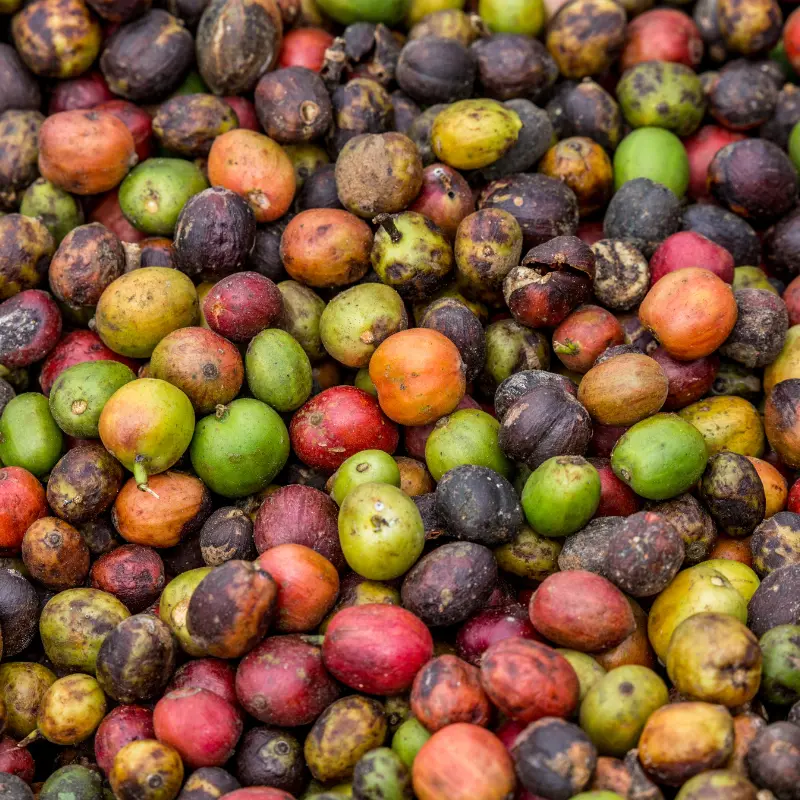 ## Coffee Production in Africa: Strengths and ChallengesOver the years, coffee production has grown in Africa on a wider scale. Several factors contribute to this growth. The first important factor is the overall growth in coffee demand globally. However, locals, including the younger generation have also started to show keen interest in the crop for both business and consumption. This hasn’t just led to the increase of its production but also more investment. Further, movements in supporting smaller-scale farmers to increase revenue and livelihood, and fair pay have also improved the overall coffee farming landscape. In addition to exports, coffee production for local consumption has grown substantially across African countries.
## Coffee Production in Africa: Strengths and ChallengesOver the years, coffee production has grown in Africa on a wider scale. Several factors contribute to this growth. The first important factor is the overall growth in coffee demand globally. However, locals, including the younger generation have also started to show keen interest in the crop for both business and consumption. This hasn’t just led to the increase of its production but also more investment. Further, movements in supporting smaller-scale farmers to increase revenue and livelihood, and fair pay have also improved the overall coffee farming landscape. In addition to exports, coffee production for local consumption has grown substantially across African countries.
The Traditional Dry Coffee Processing in AfricaTo date, most African farmers and producers still use the dry coffee processing method, which integrates natural air drying of green coffee beans. Now, this method has been used on the continent by farmers for decades.** While hand-dry processing plays a role in yielding the distinctive flavors we love, it is time-consuming and impacts production levels. **A single farmer can take up to a month to process and ready their consignment for sale and shipment. Often during this time, they have to lay the beans outdoors under the sun daily, constantly moving the beans to counter mold, mildew, and other potentially damaging components. Moreover, global climate change patterns affect the process as irregular weather changes happen. For instance, a farmer may fail to meet the targeted shipment day due to unexpected rainfall.
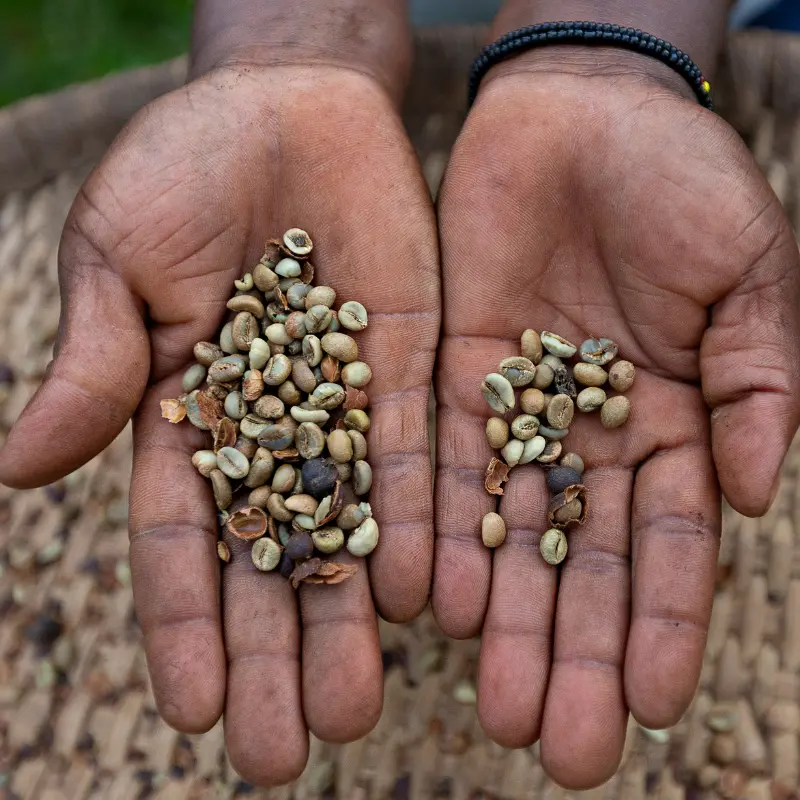 ### Challenges Hindering Africa’s Full Potential in the Global Coffee MarketNonetheless, various challenges still loom in this area. While some of the best coffee comes from the African region, African coffee still only captures 10-12% of the global market share. **Compared to other coffee-producing regions, such as Asia and the Americas, most coffee producers in Africa are small-scale and can’t produce such huge harvests. **Similarly, poor infrastructure plays a significant role in the low market for African coffee. For example, robusta coffee grown in the Kagera region of Tanzania (Tanzania’s only robusta coffee-producing region) is 870 miles from the nation’s commercial port city, Dar es Salaam. Moreover, railway infrastructure from Kagera to Dar es Salaam is not nonexistent while air travel is limited due to the smaller airport capacity.
### Challenges Hindering Africa’s Full Potential in the Global Coffee MarketNonetheless, various challenges still loom in this area. While some of the best coffee comes from the African region, African coffee still only captures 10-12% of the global market share. **Compared to other coffee-producing regions, such as Asia and the Americas, most coffee producers in Africa are small-scale and can’t produce such huge harvests. **Similarly, poor infrastructure plays a significant role in the low market for African coffee. For example, robusta coffee grown in the Kagera region of Tanzania (Tanzania’s only robusta coffee-producing region) is 870 miles from the nation’s commercial port city, Dar es Salaam. Moreover, railway infrastructure from Kagera to Dar es Salaam is not nonexistent while air travel is limited due to the smaller airport capacity.
The Complex Web of Transport Challenges in Africa’s Coffee Supply ChainSo, the only reliable travel is the minimum 21-hour travel by road. The 21-hour travel is only calculated by the distance and a standard highway speed without considering other factors. These include poor road conditions, limited quality trucks, and weather changes (Kagera can be relatively cool while other regions along the way are very warm – travel from Kagera to Dar es Salaam covers more than 5 regions).** This is only a fraction of the factors to consider – but many more exist. With such challenges experienced along the way, it is unsurprising that the supply chain becomes long. **A small-scale farmer cannot navigate the high transport and storage costs, whether to Dar es Salaam or the nearby neighboring Uganda capital, Kampala (which is just 188 miles away!). Due to this, the farmer ends up earning significantly less as the higher-ups on the supply chain try to maintain friendly prices. With this continuing cycle, it is easy to understand why the African coffee market continues to loom and remain in the same limited cycle!
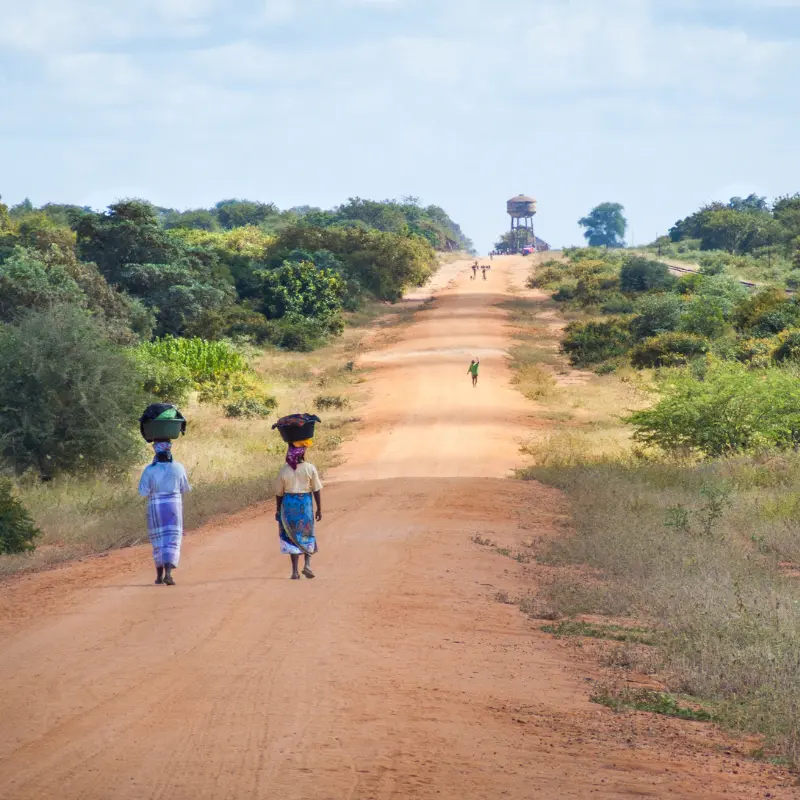 ### Climate Change Impacts on African Coffee Farming: Rainfall, Processing, and Pest InfestationsThe effects of global climate change can also be felt within the coffee farming sector. For one, the weather pattern changes affect coffee farming and processing. As mentioned earlier, irregular rainfall impacts the natural dry process of green coffee beans, a practice that has been used for decades. Temperature changes have also been reported to aggravate pest infestations as they create the perfect conditions for pests and diseases to thrive.
### Climate Change Impacts on African Coffee Farming: Rainfall, Processing, and Pest InfestationsThe effects of global climate change can also be felt within the coffee farming sector. For one, the weather pattern changes affect coffee farming and processing. As mentioned earlier, irregular rainfall impacts the natural dry process of green coffee beans, a practice that has been used for decades. Temperature changes have also been reported to aggravate pest infestations as they create the perfect conditions for pests and diseases to thrive.
Strengths Challenges Growth in global coffee demand. African coffee captures only 10-12% of the global market share. Increasing local interest in coffee cultivation and consumption. Most producers are small-scale, limiting huge harvests. Investments in coffee production. Poor infrastructure affecting transport and supply chain. Support for small-scale farmers enhancing revenue and livelihood. High transport and storage costs for small-scale farmers. Rise in local coffee consumption across African countries. Effects of climate change on coffee farming and processing. Distinctive flavors from hand-dry processing. Increasing pest infestations due to changing temperatures. 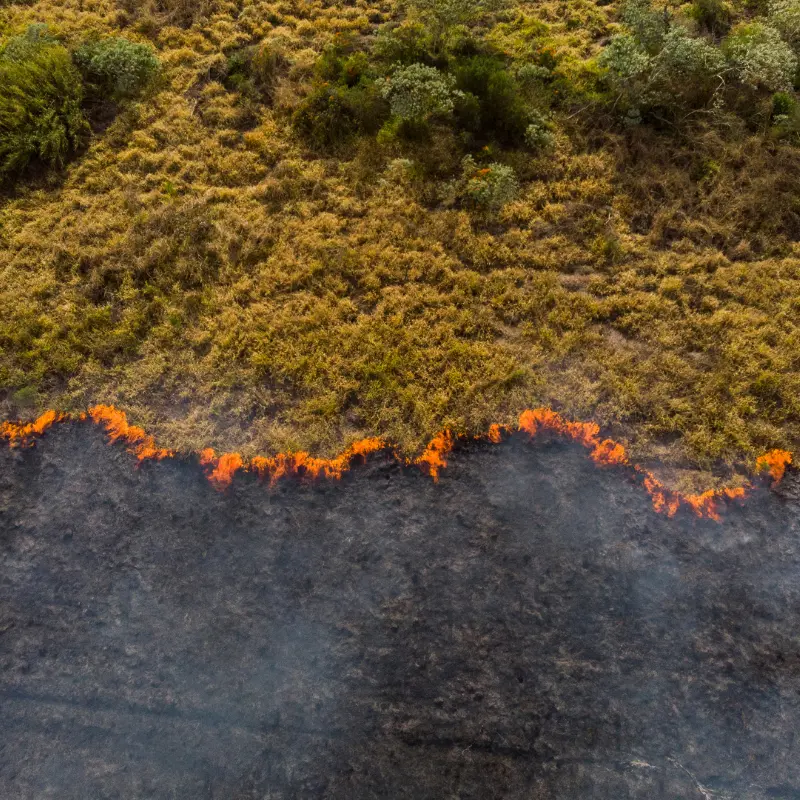 ### Political and Regulatory HurdlesAfrica, home to several nations that boast fertile lands suitable for coffee cultivation, holds significant promise in the international coffee market. However, navigating through the intricacies of African coffee exports reveals a myriad of political and regulatory challenges that growers, traders, and investors grapple with. Here’s an in-depth look at some of the key issues:
### Political and Regulatory HurdlesAfrica, home to several nations that boast fertile lands suitable for coffee cultivation, holds significant promise in the international coffee market. However, navigating through the intricacies of African coffee exports reveals a myriad of political and regulatory challenges that growers, traders, and investors grapple with. Here’s an in-depth look at some of the key issues:
- $12. $13. $14. $15. $16. $17. $18. $1
Older Farming PracticesIn Tanzania, older farming practices aren’t just limited to the natural dry processing of green beans. Many farms, particularly in the Kilimanjaro and Kagera regions depend on older trees. Now, this is a problem as older trees yield lower harvests. Other farmers don’t have up-to-date knowledge of managing their coffee trees – or, choose to not put in the effort. Additionally, coffee trees, particularly arabica varieties, growing at higher altitudes have a more high-maintenance nature, requiring labor and time.
The Choice of Coffee VarietiesEven with new and younger trees, farmers may still experience hurdles. Varieties, such as the Arabica Bourbon pointu are known to be susceptible to diseases, such as leaf rust. Leaf rust is a common coffee tree disease across all coffee regions, no matter the environmental differences.
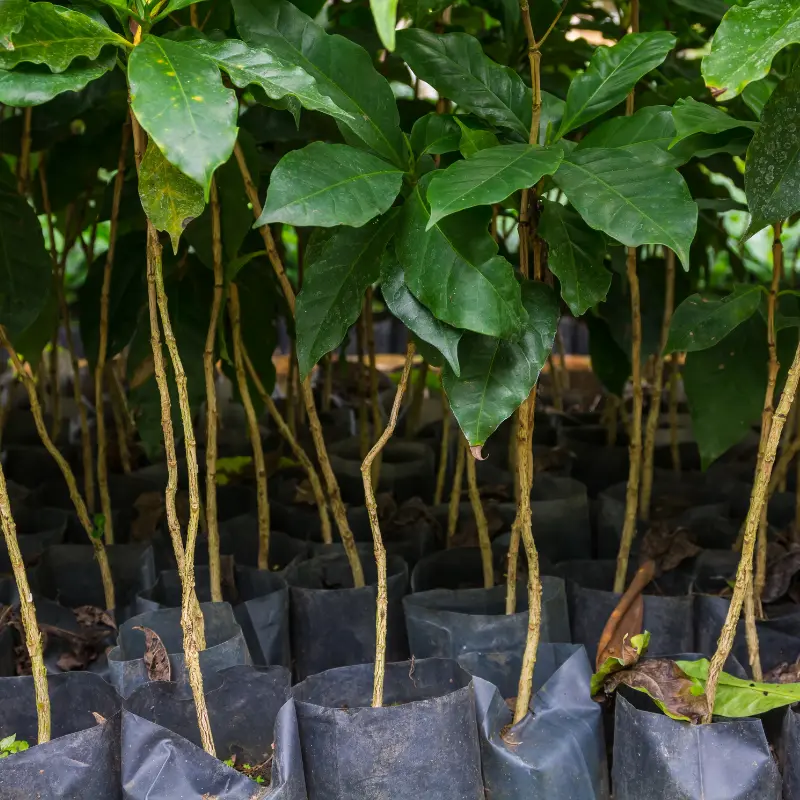 ### Opportunities for Better ProfitsMany farmers in the Kagera region have ditched robusta coffee farming for the more lucrative vanilla crop. This has significantly reduced coffee production, leading to even lower coffee volumes for export. As farmers put less emphasis on coffee farming, less effort is put into improving the sector.
### Opportunities for Better ProfitsMany farmers in the Kagera region have ditched robusta coffee farming for the more lucrative vanilla crop. This has significantly reduced coffee production, leading to even lower coffee volumes for export. As farmers put less emphasis on coffee farming, less effort is put into improving the sector.
Potential Future Opportunities for Coffee Production in Africa**Undoubtedly, coffee production in Africa still has unimaginable potential. **Like elsewhere in coffee-producing regions, climate change continues to be a huge threat. Nonetheless, with just a few adjustments, the sector can thrive. For one, natural processing and sustainable farming practices guarantee adequate production and superior bean quality. With improved financial compensation, trading policy, the addition of new stronger varieties, and awareness, coffee production, and sales can significantly skyrocket.
